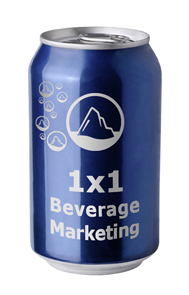January 26, 2016
Seduction with in-pack and on-pack measures at the POS
“Spoilt for choice.” The validity of this saying is proven when a customer goes shopping at the supermarket and is overwhelmed by the variety of brands. Differentiation by quality characteristics alone is no longer enough with this wealth of offers. Skilful marketing counts. This is where in-pack and on-pack measures, that is bonuses in or on the packaging, play an important role. Purposefully applied, they can become a key success factor.
Understanding the effect of in-pack and on-pack measures does not require specialised knowledge of psychology. For the customer, they mean added value at the regular price. Bonuses increase the customer’s perceived value of the product.
Who isn’t pleased to find an attractive cocktail glass with pre-marked mixing ratios hanging on a liquor bottle? Often this added value provides the crucial incentive that motivates the consumer to buy. After all, studies have repeatedly shown that 70% of buying decisions are only made at the POS. At most the consumer usually writes a shopping list with the type of goods but not the brand name item itself. Points can be scored here with skilful in-pack or on-pack measures. But the studies go a lot farther: 40% of purchases made at supermarkets are unplanned. Items land in the shopping cart spontaneously. Often such spontaneous purchases are associated with emotional added value.
Accordingly it is little wonder that attractive in-pack and on-pack measures are so popular. There are virtually no limits on the creativity of advertisers when it comes to implementation: Bonuses range from attractive, branded glasses to a party CD for the next occasion or a trendy T-shirt with the favourite brand.
Maintaining a relationship with in and on-pack measures
All creativity notwithstanding, some rules have to be observed for successful in and on-pack measures. A high affinity between the product and in or on-pack measure is important for success. “It makes no sense to add a high-end bonus that is not related to the product,” says Christian Machers from Gastro-Cool. “Otherwise there is a risk of the bonus becoming the focus, rather than the product itself.” That means: The brand is not remembered and brand value suffers.
Conclusion: All on-pack measures require careful planning. The target groups, occasions and concrete measures must be perfectly coordinated and fit into the marketing mix of the beverage producer. If the relationship with the product is right, brand value and promises can be communicated.

